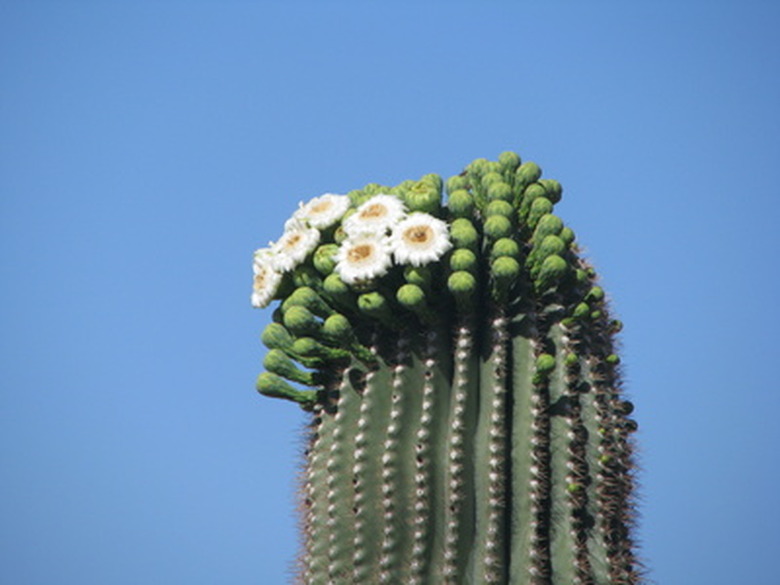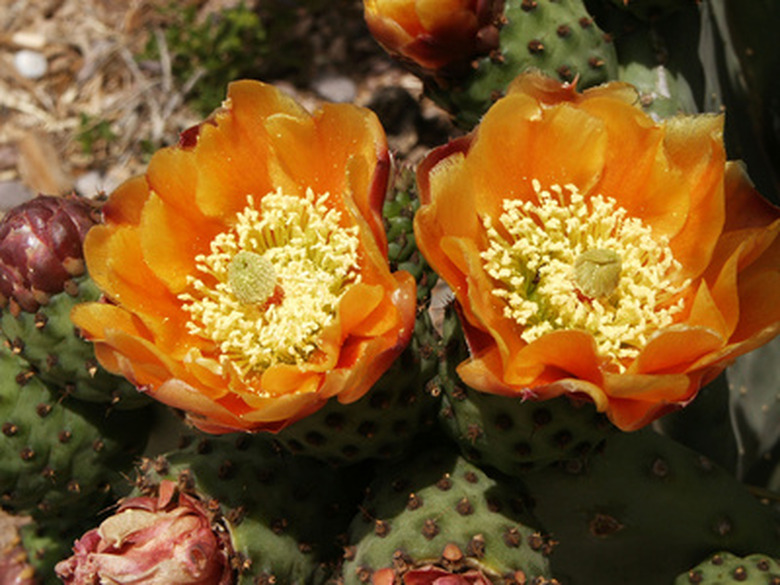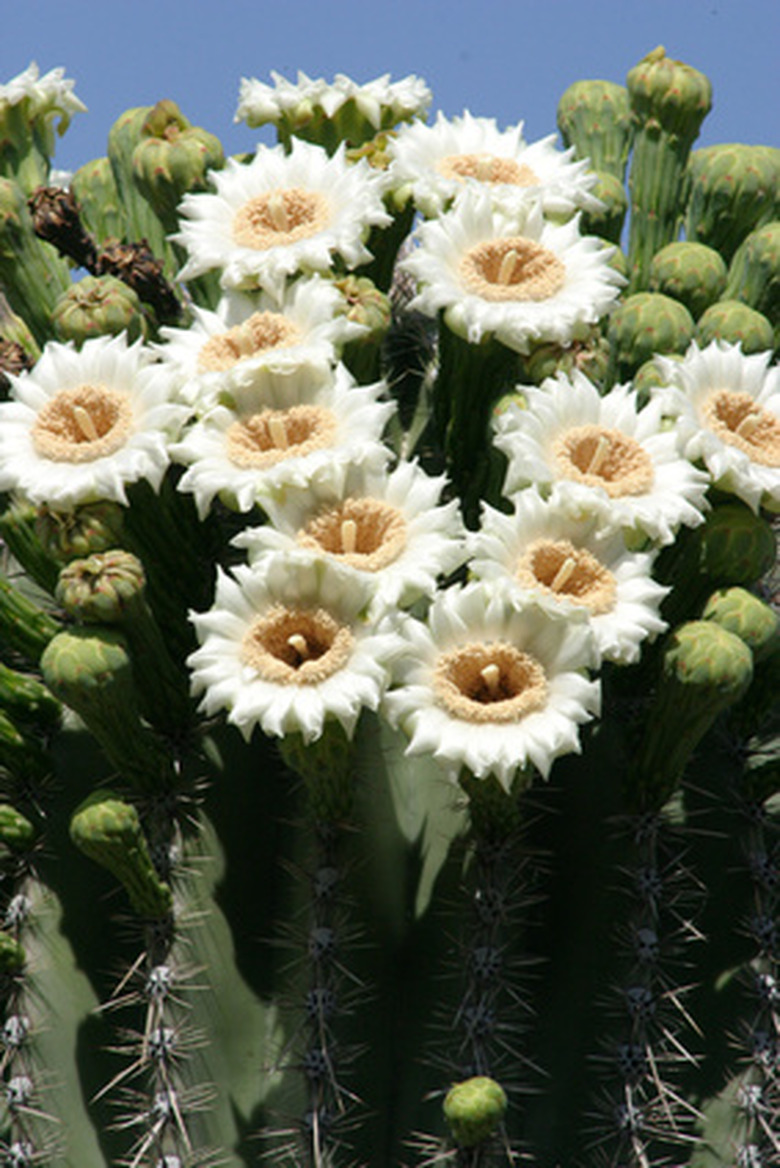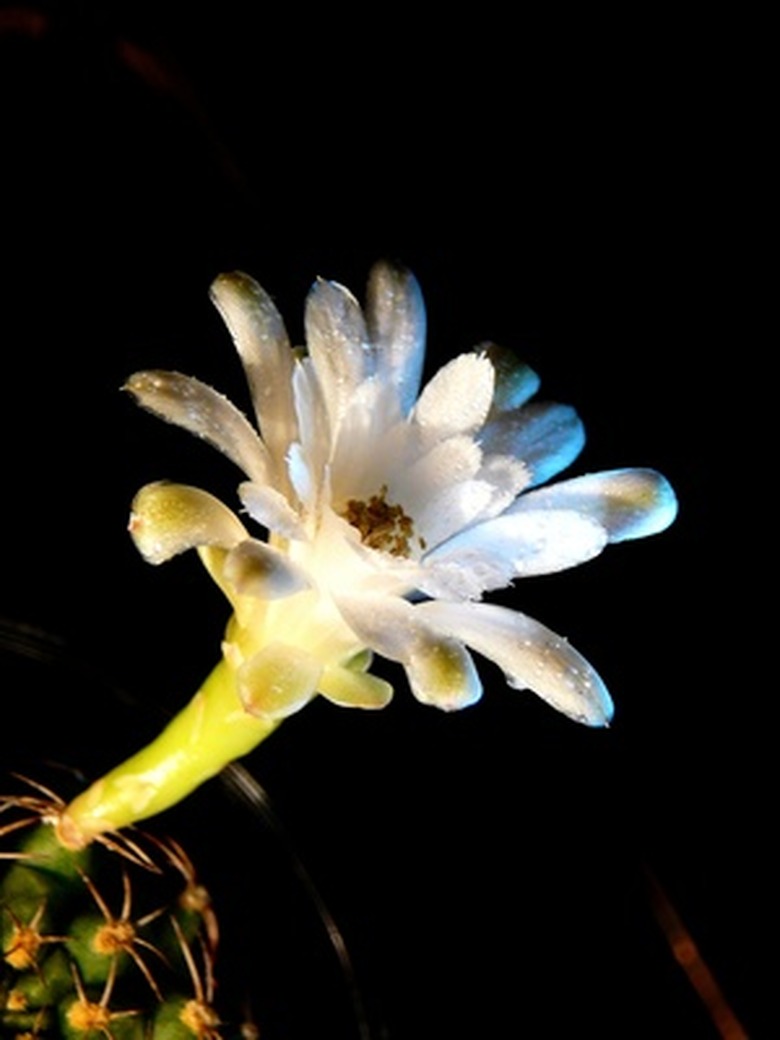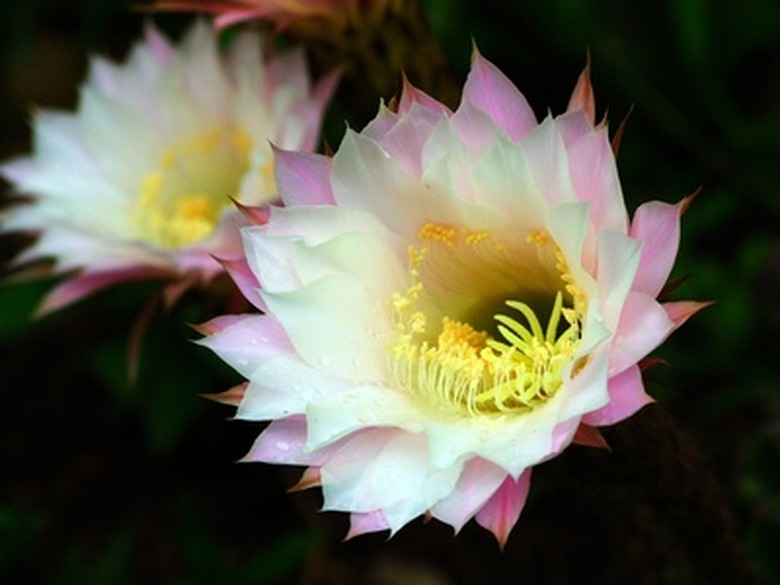The Names Of Cactus Flowers
Members of the cactus family (Cactaceae) bear flowers that are noted for the many stamens in their centers. While the spiny, thorn-protected plants may look stark and uninviting most of the year, rainfall, heat or day-length can trigger the production of flowers. There are between 1,000 an 2,000 different species of cacti, which range from small groundcover-like clumps to upright, tree-like specimens.
Prickly Pear
Prickly pears are so named because their fruits are edible but must be carefully plucked from the prickly padded "leaves" from where they ripen. Belonging to the botanical genus Opuntia, these cacti bear showy flowers that are often yellow, although some species produce white, pink, orange or red flowers.
Saguaro
Naturally found only in the Sonoran Desert, the saguaro (Carnegiea gigantea) blooms in late spring to early summer. Its white flowers open at night, attracting nectar-seeking and pollinating doves. The flower then closes by noon the following day. Not all blossoms open at once, but rather a few each night over several days. Pollinated flowers become fleshy fruits, each loaded with upwards of 4,000 seeds, according to Desert USA.
- Members of the cactus family (Cactaceae) bear flowers that are noted for the many stamens in their centers.
- Belonging to the botanical genus Opuntia, these cacti bear showy flowers that are often yellow, although some species produce white, pink, orange or red flowers.
Night Blooming Cereus
Plants that belong to the botanical genus Cereus, Hylocereus or Peniocereus, all of which are commonly called "night blooming cereus" or "queen of the night," feature long stems that ramble over rocks or tree limbs. White blossoms open in total darkness and are closed by dawn the next morning. Plants in the genus Epiphyllum look similar but their flowers are not restricted to opening at night.
Rose Pereskia
The blossoms of the succulent cactus shrub known as rose pereskia look like roses or camellias. Pink flowers occur on species Pereskia grandiflora, while pure orange petals develop on the Pereskia bleo species.
Echinopsis
Echinopsis common is found throughout the arid part of South America. There is huge diversity among the approximately 100 different species, but their flowers all share a trumpet-like shape and ornamental flare.
- Plants that belong to the botanical genus Cereus, Hylocereus or Peniocereus, all of which are commonly called "night blooming cereus" or "queen of the night," feature long stems that ramble over rocks or tree limbs.
- Plants in the genus Epiphyllum look similar but their flowers are not restricted to opening at night.
References
- Desert USA: Saguaro Cactus
- "Tropical Flowering Plants"; Kirsten Albrecht Llamas; 2003
